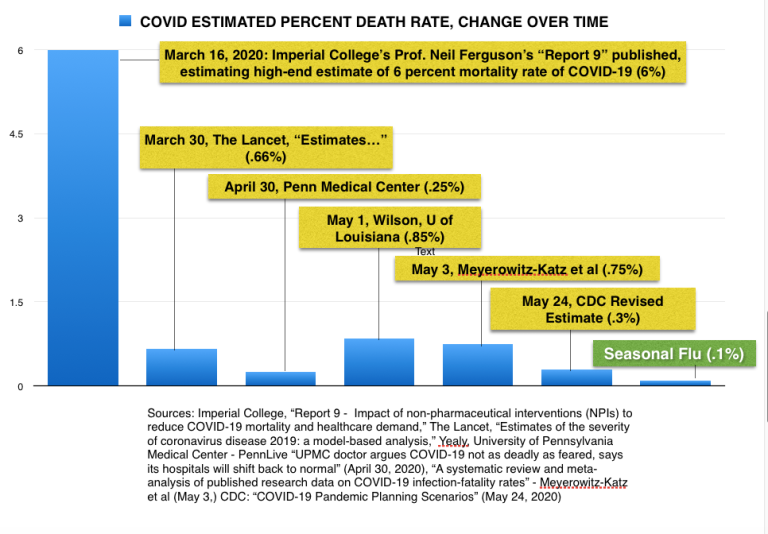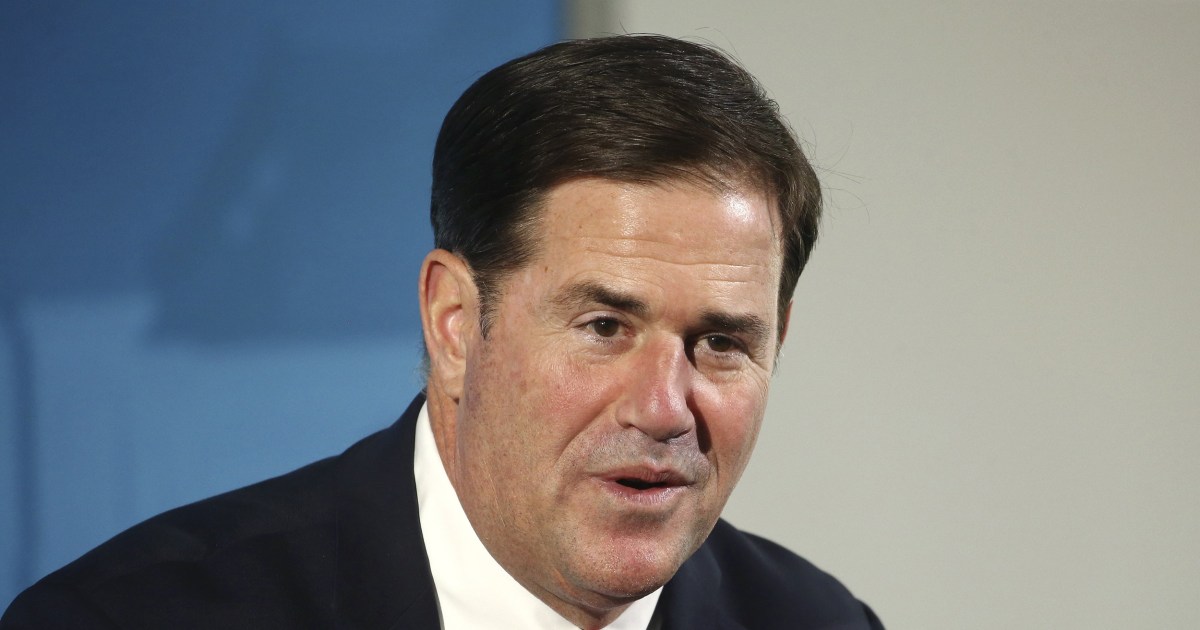munkle
Diamond Member
- Dec 18, 2012
- 5,561
- 9,701
- 2,130
So now we know that the scientist who made the prediction that there could be "over 2 million dead in US" if there was no lockdown is a quack who is being called one of the "most wrong" scientists in the world, by other scientists. There was never any danger of millions dead, lockdown or no lockdown. See: "‘Professor Lockdown’ Modeler Resigns in Disgrace" (National Review)
Better yet, the new CDC coronavirus mortality rate estimated by CDC puts it firmly in the neighborhood of ordinary flu, which is .1% of cases. The revised estimate follows a study from U Penn Medical Centerwhich puts the real mortality rate even lower, .25%.
Shutdowns and social distancing are imposing the backwards science of preventing herd immunity. By delaying the wall of herd immunity, the RNA virus has more time to mutate into more deadly forms in a deadlier second wave.
For comparison:
Regular flu mortality rate: .1%
1968 Hong Kong flu mortality rate: .5%
1968 season US Hong Kong flu deaths:100,000
1957 H2N2 flu mortality rate .7%
1957 season US H2N2 deaths 116,000
2017 - 2018 US flu deaths: 80,000
Recall that in 1957 and 1968 the US had only 1/2 to 2/3 of the present population.
Better yet, the new CDC coronavirus mortality rate estimated by CDC puts it firmly in the neighborhood of ordinary flu, which is .1% of cases. The revised estimate follows a study from U Penn Medical Centerwhich puts the real mortality rate even lower, .25%.
Shutdowns and social distancing are imposing the backwards science of preventing herd immunity. By delaying the wall of herd immunity, the RNA virus has more time to mutate into more deadly forms in a deadlier second wave.
For comparison:
Regular flu mortality rate: .1%
1968 Hong Kong flu mortality rate: .5%
1968 season US Hong Kong flu deaths:100,000
1957 H2N2 flu mortality rate .7%
1957 season US H2N2 deaths 116,000
2017 - 2018 US flu deaths: 80,000
Recall that in 1957 and 1968 the US had only 1/2 to 2/3 of the present population.
Reason MagazineThe CDC's New 'Best Estimate' Implies a COVID-19 Infection Fatality Rate Below 0.3%
By JACOB SULLUM|5.24.2020 5:35 PM
That rate is much lower than the numbers used in the horrifying projections that shaped the government response to the epidemic.
According to the Centers for Disease Control and Prevention (CDC), the current "best estimate" for the fatality rate among Americans with COVID-19 symptoms is 0.4 percent. The CDC also estimates that 35 percent of people infected by the COVID-19 virus never develop symptoms. Those numbers imply that the virus kills less than 0.3 percent of people infected by it—far lower than the infection fatality rates (IFRs) assumed by the alarming projections that drove the initial government response to the epidemic, including broad business closure and stay-at-home orders.
The CDC offers the new estimates in its "COVID-19 Pandemic Planning Scenarios," which are meant to guide hospital administrators in "assessing resource needs" and help policy makers "evaluate the potential effects of different community mitigation strategies." It says "the planning scenarios are being used by mathematical modelers throughout the Federal government."
The CDC's five scenarios include one based on "a current best estimate about viral transmission and disease severity in the United States." That scenario assumes a "basic reproduction number" of 2.5, meaning the average carrier can be expected to infect that number of people in a population with no immunity. It assumes an overall symptomatic case fatality rate (CFR) of 0.4 percent, roughly four times the estimated CFR for the seasonal flu. The CDC estimates that the CFR for COVID-19 falls to 0.05 percent among people younger than 50 and rises to 1.3 percent among people 65 and older. For people in the middle (ages 50–64), the estimated CFR is 0.2 percent.
That "best estimate" scenario also assumes that 35 percent of infections are asymptomatic, meaning the total number of infections is more than 50 percent larger than the number of symptomatic cases. It therefore implies that the IFR is between 0.2 percent and 0.3 percent. By contrast, the projections that the CDC made in March, which predicted that as many as 1.7 million Americans could die from COVID-19 without intervention, assumed an IFR of 0.8 percent. Around the same time, researchers at Imperial College produced a worst-case scenario in which 2.2 million Americans died, based on an IFR of 0.9 percent.
Such projections had a profound impact on policy makers in the United States and around the world. At the end of March, President Donald Trump, who has alternated between minimizing and exaggerating the threat posed by COVID-19, warned that the United States could see "up to 2.2 million deaths and maybe even beyond that" without aggressive control measures, including lockdowns.
One glaring problem with those worst-case scenarios was the counterfactual assumption that people would carry on as usual in the face of the pandemic—that they would not take voluntary precautions such as avoiding crowds, minimizing social contact, working from home, wearing masks, and paying extra attention to hygiene. The Imperial College projection was based on "the (unlikely) absence of any control measures or spontaneous changes in individual behaviour." Similarly, the projection of as many as 2.2 million deaths in the United States cited by the White House was based on "no intervention"—not just no lockdowns, but no response of any kind.
Another problem with those projections, assuming that the CDC's current "best estimate" is in the right ballpark, was that the IFRs they assumed were far too high. The difference between an IFR of 0.8 to 0.9 percent and an IFR of 0.2 to 0.3 percent, even in the completely unrealistic worst-case scenarios, is the difference between millions and hundreds of thousands of deaths—still a grim outcome, but not nearly as bad as the horrifying projections cited by politicians to justify the sweeping restrictions they imposed...



